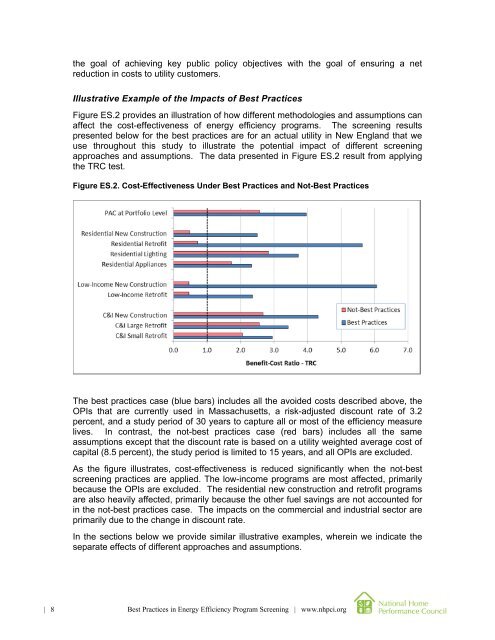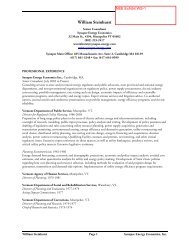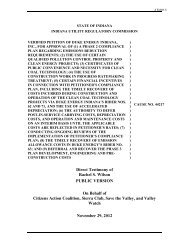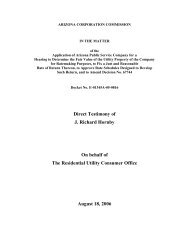Best Practices in Energy Efficiency Program Screening - Synapse ...
Best Practices in Energy Efficiency Program Screening - Synapse ...
Best Practices in Energy Efficiency Program Screening - Synapse ...
You also want an ePaper? Increase the reach of your titles
YUMPU automatically turns print PDFs into web optimized ePapers that Google loves.
the goal of achiev<strong>in</strong>g key public policy objectives with the goal of ensur<strong>in</strong>g a net<br />
reduction <strong>in</strong> costs to utility customers.<br />
Illustrative Example of the Impacts of <strong>Best</strong> <strong>Practices</strong><br />
Figure ES.2 provides an illustration of how different methodologies and assumptions can<br />
affect the cost-effectiveness of energy efficiency programs. The screen<strong>in</strong>g results<br />
presented below for the best practices are for an actual utility <strong>in</strong> New England that we<br />
use throughout this study to illustrate the potential impact of different screen<strong>in</strong>g<br />
approaches and assumptions. The data presented <strong>in</strong> Figure ES.2 result from apply<strong>in</strong>g<br />
the TRC test.<br />
Figure ES.2. Cost-Effectiveness Under <strong>Best</strong> <strong>Practices</strong> and Not-<strong>Best</strong> <strong>Practices</strong><br />
The best practices case (blue bars) <strong>in</strong>cludes all the avoided costs described above, the<br />
OPIs that are currently used <strong>in</strong> Massachusetts, a risk-adjusted discount rate of 3.2<br />
percent, and a study period of 30 years to capture all or most of the efficiency measure<br />
lives. In contrast, the not-best practices case (red bars) <strong>in</strong>cludes all the same<br />
assumptions except that the discount rate is based on a utility weighted average cost of<br />
capital (8.5 percent), the study period is limited to 15 years, and all OPIs are excluded.<br />
As the figure illustrates, cost-effectiveness is reduced significantly when the not-best<br />
screen<strong>in</strong>g practices are applied. The low-<strong>in</strong>come programs are most affected, primarily<br />
because the OPIs are excluded. The residential new construction and retrofit programs<br />
are also heavily affected, primarily because the other fuel sav<strong>in</strong>gs are not accounted for<br />
<strong>in</strong> the not-best practices case. The impacts on the commercial and <strong>in</strong>dustrial sector are<br />
primarily due to the change <strong>in</strong> discount rate.<br />
In the sections below we provide similar illustrative examples, where<strong>in</strong> we <strong>in</strong>dicate the<br />
separate effects of different approaches and assumptions.<br />
| 8 <strong>Best</strong> <strong>Practices</strong> <strong>in</strong> <strong>Energy</strong> <strong>Efficiency</strong> <strong>Program</strong> Screen<strong>in</strong>g | www.nhpci.org







